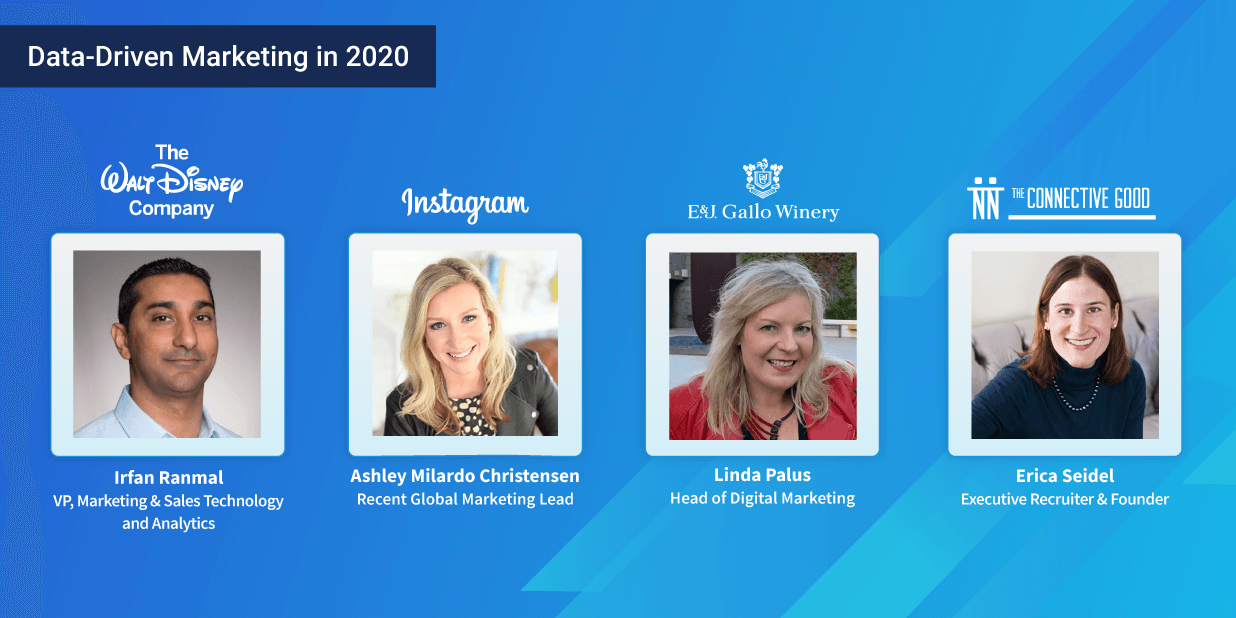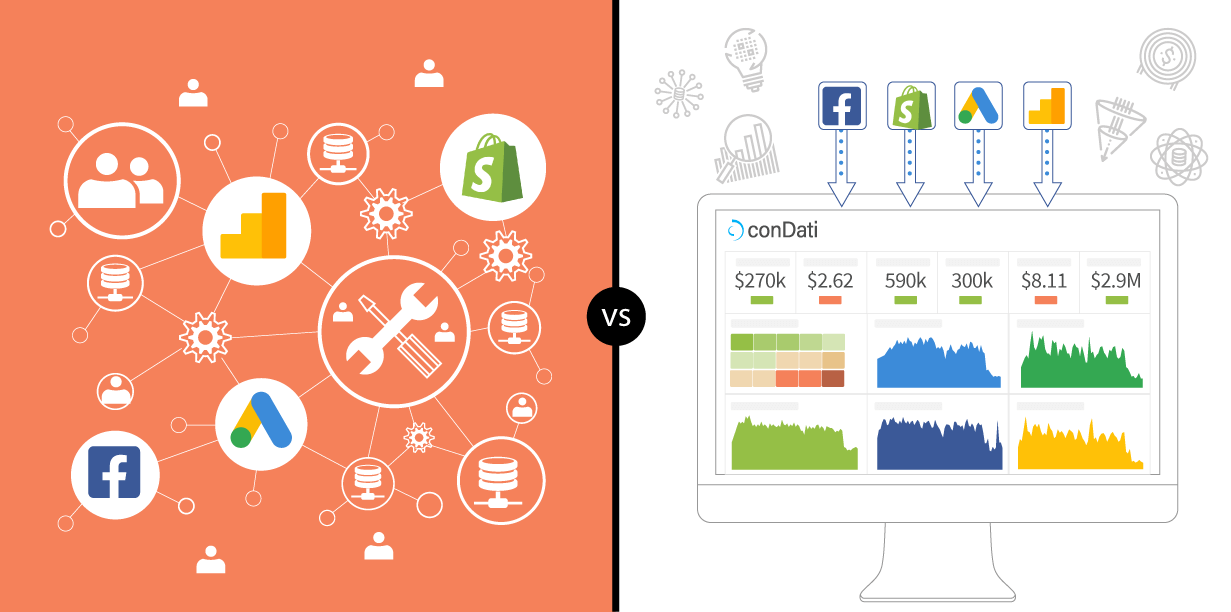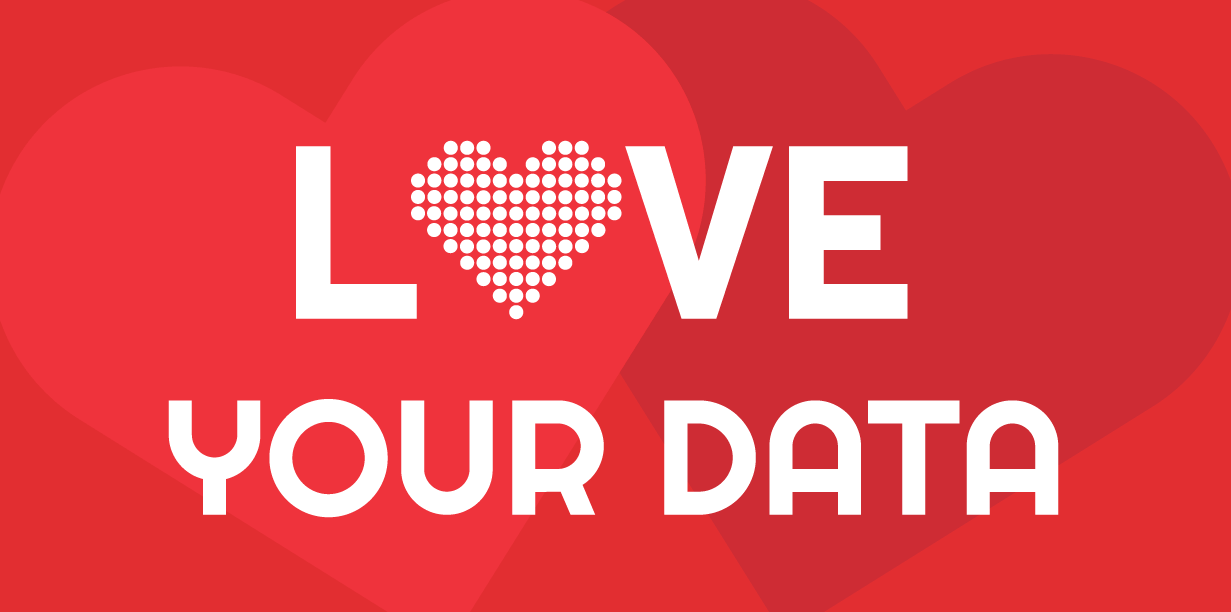The New Persona of Today’s Data-Driven Marketer
We are not the same person. From last year or five years ago.
Recently, I had the privilege to co-host with Adweek an amazing group of data-driven, digital marketing thought leaders for a webcast titled: The 4 Essential Elements of Data-Driven Marketing: What You Need to Know in 2020. From my time with them, this blog represents the first in a series to highlight some of the best takeaways from our panel discussion: Check out the panelists who drew close to 1500 registrants!
There was invaluable ground covered and all panelists shared CMO-level insights that I think we felt we could immediately take to the bank!
This series will cover why it’s time for all of us to take a holistic approach to data-driven marketing by considering people, process, and technology—as well as data. It’s also more important than ever to identify any blind spots that keep us from leading our organizations toward competitive success in an environment of tighter scrutiny of marketing spend against business goals, advancements in technology such as AI for marketing, new data privacy laws, and a growing demand for data scientists and data analysts. The stakes are high and we’re responsible for much. But we also have the resources to drive efficiencies, scale, and innovations that impact top-line revenues and bottom-line profits for our companies—making it a great time to lead marketing! So, let’s dig in.
The Evolving Role of a Data-Driven Marketer, What’s Different?
Here’s the irony in this topic. Marketing leaders have always been data-driven. Data is in our DNA. It’s the lifeblood of what we do at a foundational level to inform our marketing and sales strategy—even if we only have a small data sample. Let’s hear the “take” from those who have already garnered huge industry respect for their ability to pivot successfully to keep winning results. What follows are some of the questions I posed to select panelists and their responsive insights.
Ashley, Instagram (IG): I think this is a fascinating time. The conversation has shifted from big data—the ability to collect as much data as possible from as many sources—to data responsibility. And as a result, I’m seeing a handful of interesting shifts: The sophistication of ad platforms like IG shopping and dynamic ads; structural marketing role changes like the increase in chief data/privacy officer titles and CMOs having single lead responsibility for managing customer data and how the company uses it; a shift away from the reliance on 3rd party data and cookies industry wide—with companies realizing just how important building trust is with their customers in order to access valuable 1st party data; and the explosion of retail media networks, with companies like Walmart and Target now serving as networks within their sites to leverage a lot of the rich first-party data they have.
Erica (Executive Recruiter), you’ve been working with marketers and CMOs during your time at Forrester and in recent years as an exec recruiter for CMOs and MarTech leaders. What are people looking for in a modern marketing leader? And, how is data and digital playing a role today in the job that is different to a decade ago?
Erica: Right, so I reflected on the hundreds of conversations I’ve had with marketing leaders over the last several months and the table below is a quick look at the “then” versus the “now” of data-driven marketing. With this expanded role of marketing, it’s not enough anymore to be the master of your own marketing data, the best marketers are going to be crossing the isle to be a master of data across other functions like marketing, sales, and product. So while data is a competitive advantage today for companies, I’m starting to see collaboration in itself being a competitive advantage—companies really living out that approach and proving it. For example, not offering a work from home option or doing cross-functional internships and externships so marketing leaders can experience the trials and tribulations of other key organizational functions. Companies are choosing to really build out that collaborative DNA to better compete.”
| THEN | NOW | ||
| Role definition | Role fuzziness | → | Role clarity |
| Scope of role | CMO roles | → | Chief Marketing & Strategy Officer, Chief Marketing & Product Officer roles |
| Ownership of data | Data is outsourced | → | Data is insourced for competitive advantage |
| Stewardship of data | It’s OUR data – 'VP of Marketing Data' | → | It's OUR CUSTOMERS' data – VP of Customer Information |
| Scope of data | Marketing data | → | Data is leveraged across marketing, sales, customer support, product |
| Collaboration | Say it | → | Prove it and live it |
| Customer marketing | Acquisition first, retention later | → | Customer marketing has its heyday |
| Compensation | BASE + bonus | → | base + BONUS |
With AI/ML, where do you see the biggest opportunities? Which areas of marketing are best suited for these technologies?
Irfan, Disney: For us, AI and ML application helps us with our decision-engining, the ability to use data and analytics to leverage, create and orchestrate our marketing across a multitude of channels, essentially cutting through organizational silos to deliver the five W’s: who, what, when, where and why. For example, Disney is using machine learning as a decision-engine to help us detect consumer transaction anomalies at various points on our website which we flag to make corrections in near real time, improving and enhancing the consumer experience. We also use algorithmic heat maps of consistent crowding areas across our parks to change the way we move people traffic, or to enhance the consumer experience right there by offering food and beverage break options and opportunities for our consumers.
What are the biggest data and digital marketing challenges ahead?
Linda, E&J Gallo Winery: I think with the demise of cookies, the challenge will be about trying to build a standard universal ID across multiple devices and platforms. Also, walled gardens are going to be a challenge—because they make it difficult to engage with consumers in a sequential “path” which makes it hard to measure attribution. Finally, consumers have a new understanding of privacy and therefore more power and control. To stay competitive, companies will need to provide a benefit and value to consumers and/or greater convenience in exchange for their data—then actually use their data to provide personalized experiences and interactions for them.
The wrap up
We are a data-driven group. And the fascinating thing is that the data—in many ways the new hero behind our success in this brave new world—can be leveraged as the catalyst for how we successfully grow our companies or the demarcation point for where we started to fall behind. We have decisions to make that can take us either direction. So watch for my next blog in this series and let’s keep hearing insightful outtakes from panelists who are using AI and ML in marketing to lead and grow.
Like the blog post and want to hear the full discussion? Sign-up for The 4 Elements of Data-Driven Marketing - What You Need to Know in 2020 webinar replay on Adweek.





